Foot & Leg Ulcers
Did You Know?
Foot & Leg Ulcers
Ulcers are breaks in the layers of the skin that fail to heal. They may be accompanied by inflammation. Sometimes they don’t heal and become chronic. Chronic foot and leg ulcers mainly affect the elderly. People with diabetes are at special risk of developing foot ulcers, and foot care is an important part of diabetes management.
What Causes Ulceraton?
A varicocele is a varicose vein of the testicle and scrotum that may cause pain, testicular atrophy (shrinkage) or fertility problems. Veins contain one-way valves that work to allow blood to flow from the testicles and scrotum back to the heart. When these valves fail, the blood pools and enlarges the veins around the testicle in the scrotum to cause a varicocele. Open surgical ligation, performed by a urologist, is the most common treatment for symptomatic varicoceles. Varicocele embolization, a nonsurgical treatment performed by an interventional radiologist, is as effective as surgery with less risk, less pain and less recovery time. Patients considering surgical treatment should also get a second opinion from an interventional radiologist to ensure they know all of their treatment options. You can ask for a referral from your doctor, call the radiology department of any hospital and ask for interventional radiology.
Arterial Leg Ulcers
Approximately 70 percent of all leg ulcers are venous ulcers. A leg with venous problems has a very characteristic appearance:
What causes arterial leg ulcers?
Arterial leg ulcers are caused by poor blood circulation as a result of narrowed arteries. They are also caused by damage to the small blood vessels from long-standing diabetes.
Diabetes also increases the likelihood of atherosclerosis (narrowing of the arteries). This means people with diabetes have a much increased risk of developing arterial ulcers.
Venous Leg Ulcers
Approximately 10 percent of all leg ulcers are arterial ulcers. Feet and legs often feel cold and may have a whitish or bluish, shiny appearance. Arterial leg ulcers can be painful.
- The leg is swollen.
- the skin surrounding a the ulcer is dry, itchy and sometimes brownish in color.
- eczema may appear
- the ulcer often has a weeping appearance and usually painless unless infected.
- venous ulcers are often located just above the ankle, typically on the inside of the leg.
What causes venous leg ulcers?
Most of the venous leg ulcers occur because the valves in the veins in your legs are not functioning properly.
The venous system is made up of superficial and deep veins:
- Superficial veins are located between the skin and the muscles
- Deep veins are located between the muscles.
The valves in the veins normally ensure that blood flows from the superficial veins to the deep system. Failure of these valves prevents proper blood flow to from the superficial system to the deep system. This can result in formation of varicose veins and in more serious cases leg ulcers.
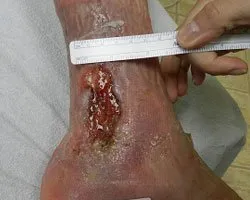
Before
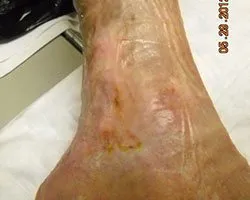
After
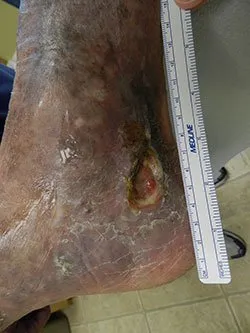
Before
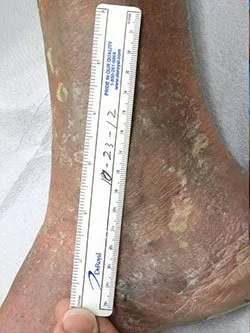
After
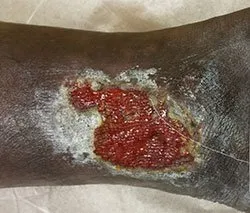
Before
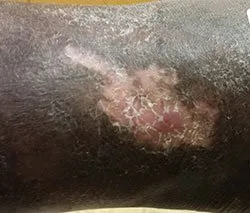
After
Related Blog Posts

Uterine Artery Embolization (UFE)
The Game-Changer You Need to Know About Before a Hysterectomy The Life-Saving Benefits of UFE …
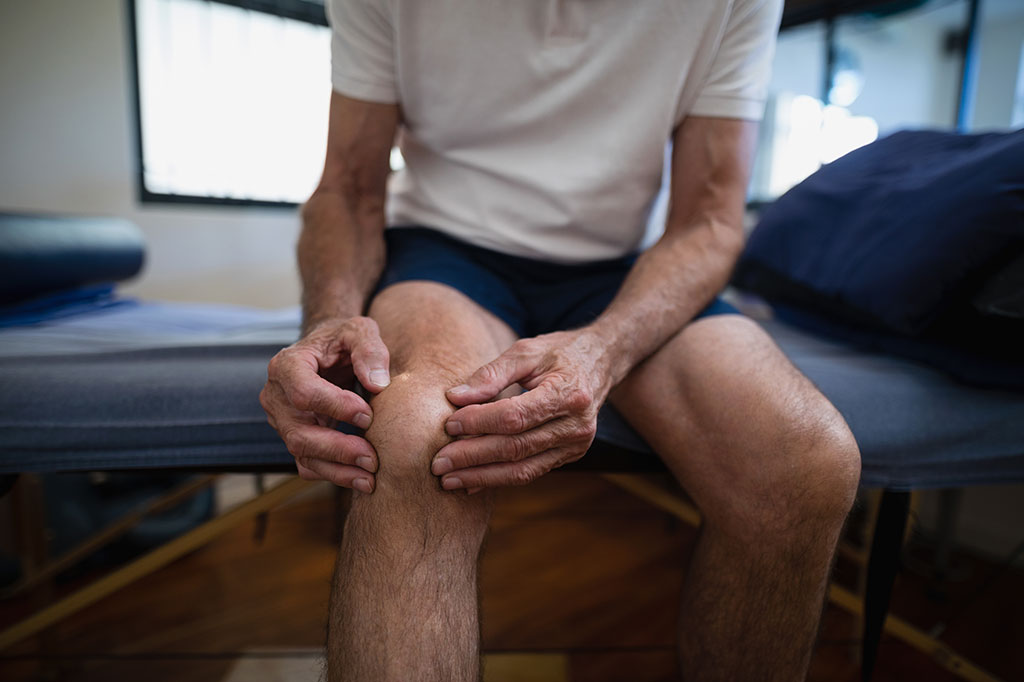
Geniculate Artery Embolization (GAE)
Did you know that Geniculate Artery Embolization (GAE) offers a revolutionary solution for knee pain …

Hemorrhoid Embolization (Emborrhoid)
Did you know that millions of people worldwide suffer from hemorrhoids, a common but often …

